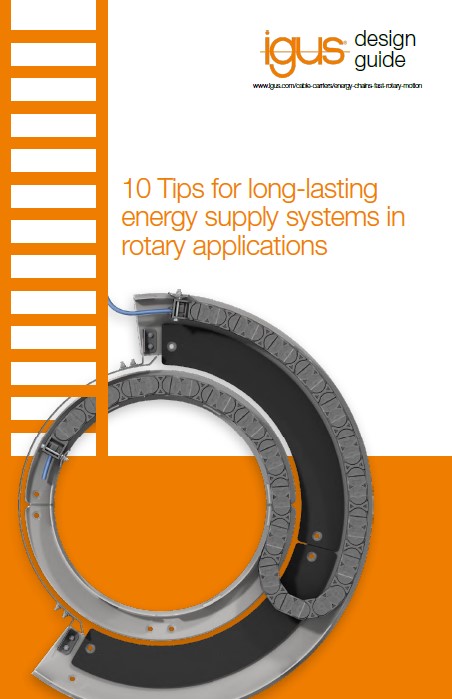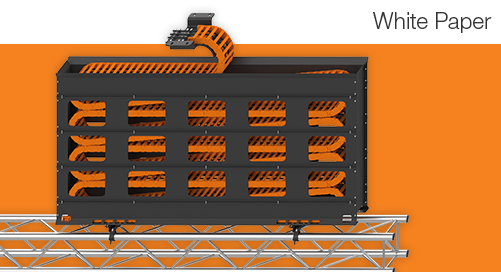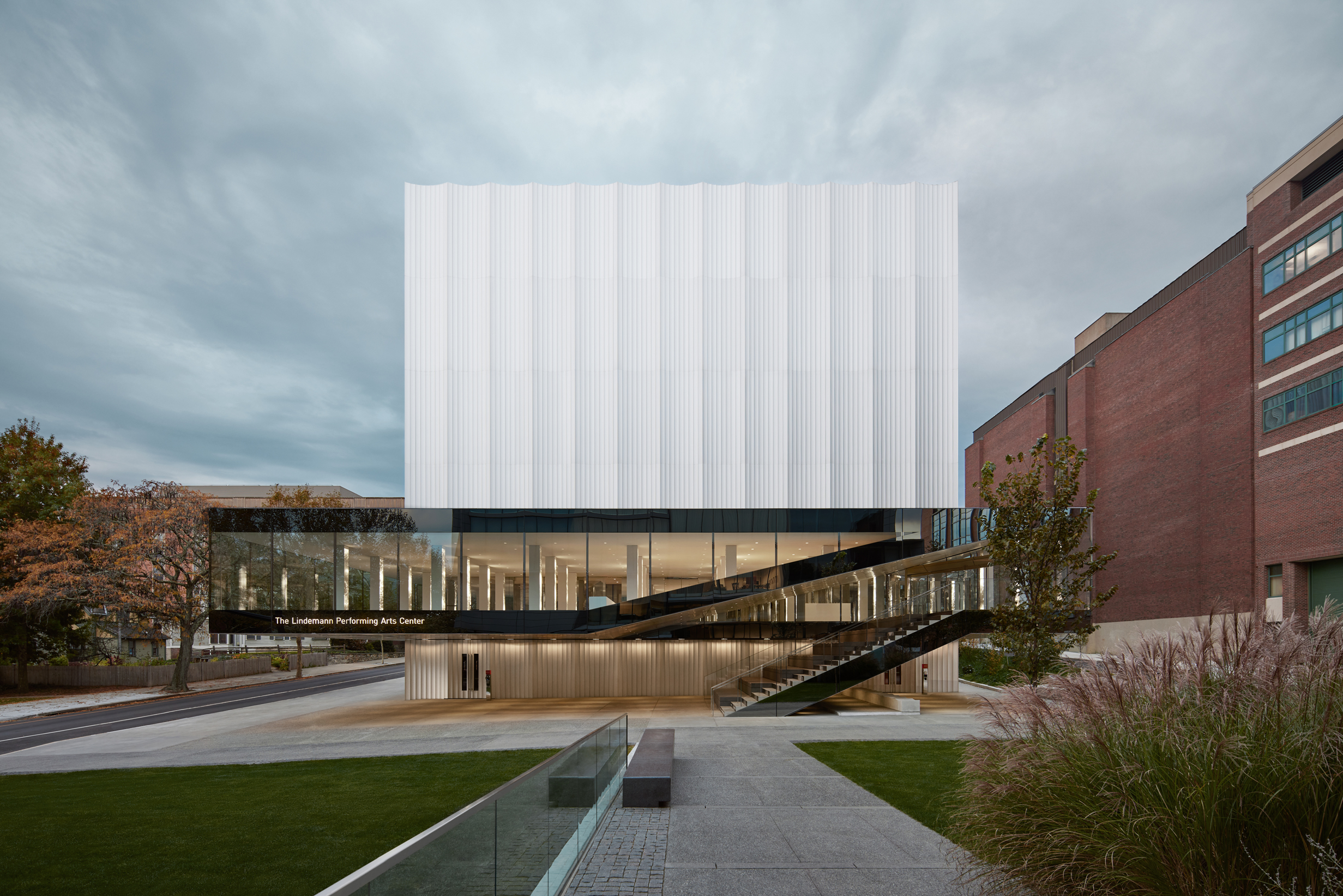Stage lighting overview & guide
Stage lighting is for more than just illuminating a performance — it’s a powerful tool that can shape an audience’s mood, direct their focus, and enhance their overall experience. Effective lighting can transform an ordinary stage into a dynamic visual experience, providing clarity and atmosphere for the performers and viewers alike.
This blog will cover essential tips and techniques for improving your stage lighting setups, diving into types of lights, common lighting setups, and efficient cable management — all of which contribute to a professional and immersive performance environment.
Types of stage lights
Having an understanding of the different types of stage lights is essential to choosing lights that will complement performances and create the desired atmosphere. Different lights serve different purposes, and combining them effectively will truly elevate your lighting design.
Spotlights: Arguably the most popular and easily recognizable type of stage light, spotlights are used to highlight a specific performer or certain area of the stage. Common variations of spotlights include follow spots and profile spots, which can track a moving object or sharply focus on key elements respectively.
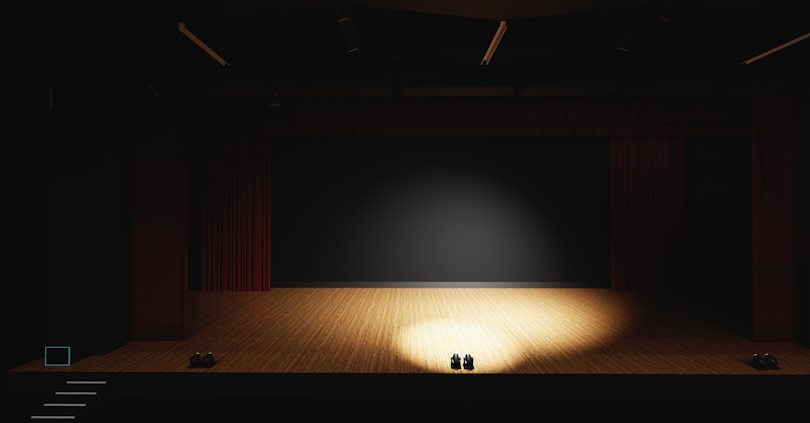
Floodlights: Designed to cover large areas, floodlights such as PAR cans or strip lights provide consistent, widespread illumination across the stage. This is ideal for filling spaces with light without creating distracting shadows.
Fresnel lights: Known for their soft-edged beams, a fresnel light is perfect for lighting smaller areas while still allowing some light to spill into adjacent spaces. A fresnel light can still be used as a spotlight, as well as part of a 3-point or high and low-key setup.
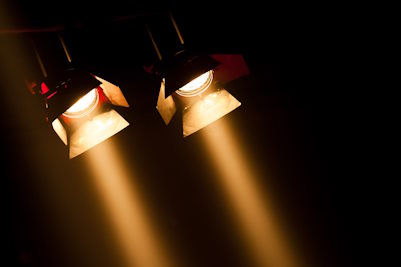
LED lights: LED lights are very common in modern stage lighting setups, due to their energy efficiency, color variety, and reduced heat output. The ability to customize their color palette gives LEDs a wide range of use across various performance types.
Moving head lights: Ideal for dynamic performances, these moveable and programmable lights can change position, creating moving beams of light and evolving lighting effects throughout a show. Their versatility makes them a highly sought after type of stage light.
Success story: e-spool flex system in an animated mirror ceiling
Special lighting effects: Strobes, fog machines, and laser lights introduce atmosphere to a performance, creating dramatic visual effects that elevate a stage’s mood or emphasize key moments.
Common stage lighting setups
There’s more to a successful event lighting setup than choosing the types of lights. Arranging and layering them effectively
Three-point lighting: Three-point lighting setups combine three different lights — a key light, fill light, and backlight. The key light is the primary light in the setup, setting the overall mood and tone of the scene. The fill light sits on the opposite side of the camera from the key light, filling in shadows with a softer, less intense light. Finally, the backlight lights the subject from behind to separate them from the background and provide more depth.
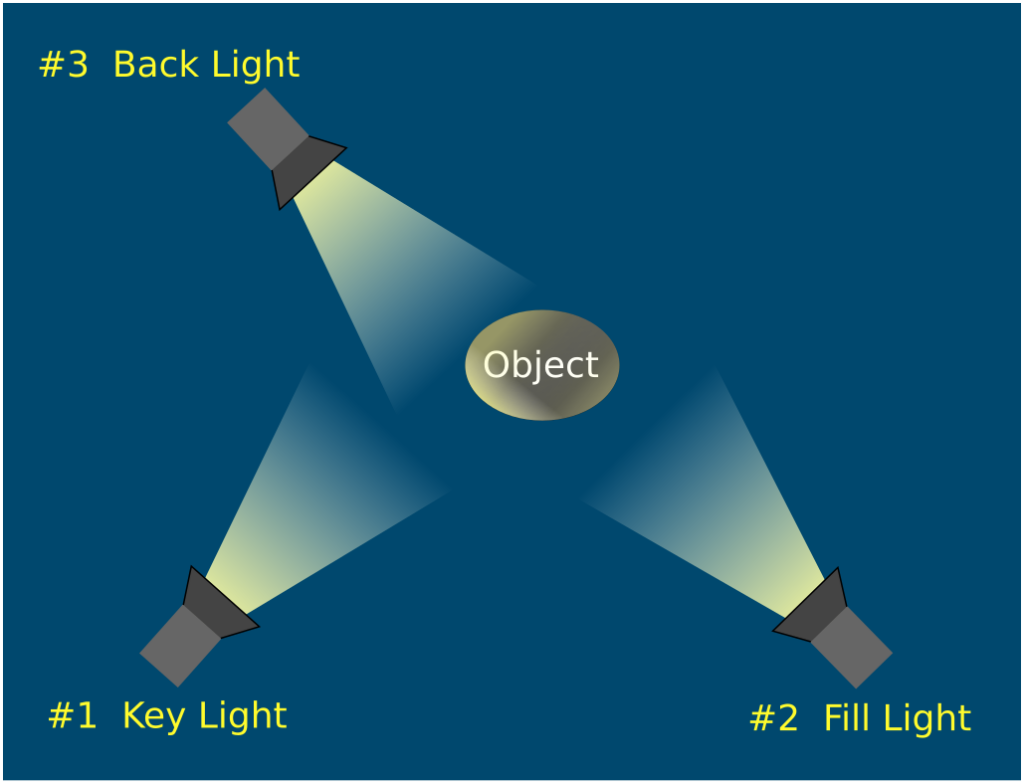
Wash lighting: Wash lighting is ideal when you need even illumination across the entire stage. Wash lighting uses multiple soft-edged lights in tandem to “wash” the entire stage with light, and ensures background and performers are visible without drawing attention to specific areas of the stage.
Spot lighting: Spot lighting helps focus viewers’ attention on specific areas or performers by creating dramatic focal points using an arrangement of spotlights. Layering multiple spotlights can deepen the mood and texture of the performance and create more dynamic visuals.
Uplighting and downlighting: Uplighting and downlighting setups add light from above and below the stage respectively. Adding light from above or below the stage can create depth and mood, enhancing the drama of the scene or performance.
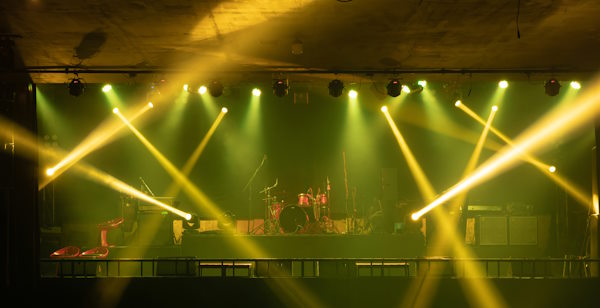
Improving cable management for stage lighting
Effective cable management is an often overlooked, but nonetheless essential, part of stage lighting setups. Cable management is crucial for safety, efficiency, and aesthetics, and can make or break any lighting setup.
The importance of proper cable management
Lighting setups, especially those with adjustable or movable lights, have an excess of cables that can pose a tripping hazard or even a fire risk if not managed properly. This puts any performers, staff, and the audience at risk during each show.
Beyond safety, well-managed cables will make your entire setup more efficient and visually tidy. This is important no matter the scope or scale of a production, as visually messy cabling can be a distraction and take away from the overall experience for the audience.
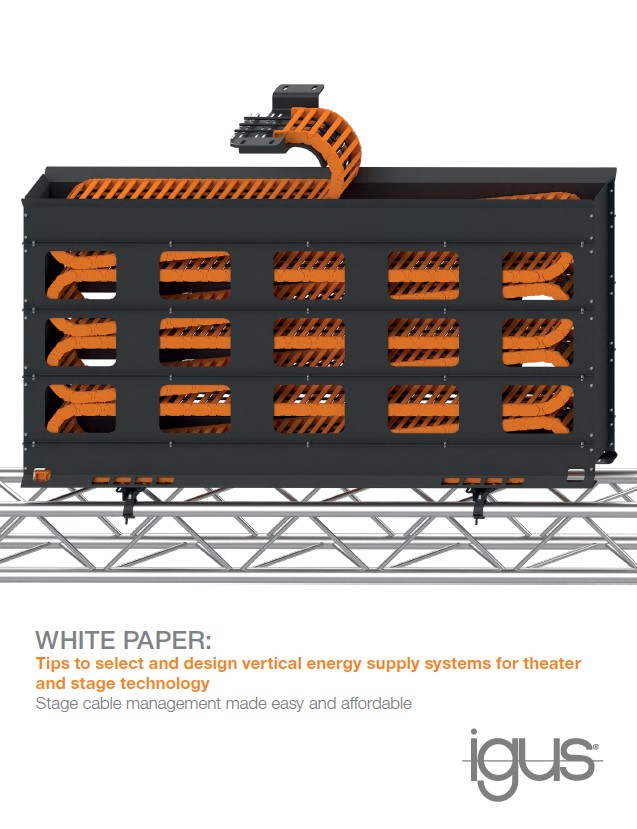
Using cable carriers
Cable carriers, especially specialized stage and theater solutions from igus, are the ideal cable management solution for the unique lighting setups often found in the industry. Regardless of the complexity of the lighting setup, there’s a cable carrier solution available. Vertical moving setups, complex multi-light setups, and even completely dynamic theaters can be safely and effectively managed with e-chain cable carriers.
Confined installation spaces with vertical travels can prove particularly difficult in terms of cable management, but igus has developed a solution specifically for such applications. The zig-zag e-chain is housed in a custom-made basket stacked over itself, and as the lighting hoist moves up and down, the chain unfolds and folds to follow the overall movement with little-to-no noise.
Other solutions like the e-spool are great for mobile lighting hoists with long travels. The chain rolls up completely in its “home” position to save space, and unwinds during travels without the need for a slip ring.
Labeling and grouping cables
Even with proper cable management, issues can still arise if cables aren’t sensibly grouped together and labeled. Labeling and organization makes troubleshooting significantly easier and eliminates the possibility of the incorrect cables being serviced, wasting time and money.
Running cables along trusses and backdrops
Even with cable management, choosing the ideal spot to run the cables is still vital to achieving an efficient and visually pleasing lighting setup. Some of the best places for this are along trusses and backdrops. Doing this keeps cables and cable management completely out of the way of performers and other staff, and out of sight of audience members as well.
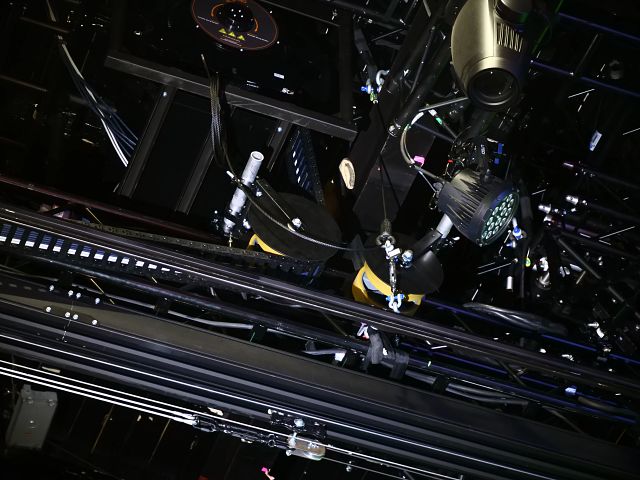
Creative tips for enhancing stage lighting
Once the basics of lighting and cable management are in place, you can begin experimenting with more creative techniques to make your theatrical lighting stand out from more ordinary setups.
Color gel techniques: Using color gels allows non-LED lights to achieve the various color options available to LED lights. As previously mentioned, the use of different colors can give lights more versatility and allow them to establish tone and atmosphere not otherwise possible.
Textured lighting with gobos: Gobos can be used to project specific patterns onto the stage with standard stage lights. This technique can be used to add visual interest and depth to the lighting, as well as serve as a storytelling device in certain productions.
Layering light intensity: Varying the intensity of different lights in your lighting setup will help create dynamic focus points. Doing this effectively will naturally guide the audience’s attention to specific performers or areas of the stage.
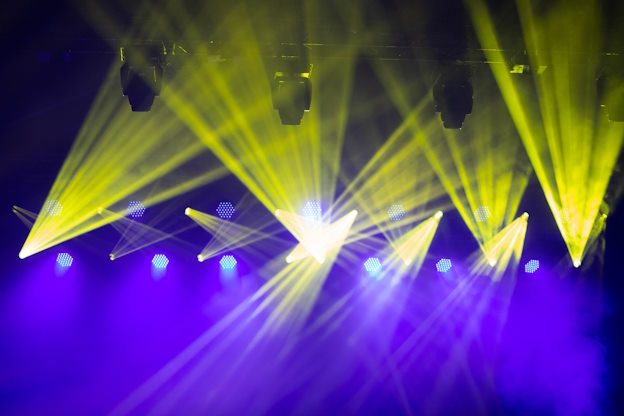
Integrating lighting with music: Syncing lighting changes with the rhythm or tone of music during a performance can heighten the emotional connection for the audience. This technique enhances the immersiveness of the show and makes the performance more captivating.
Automated and programmed lighting setups: Lighting consoles and DMX controllers allow for timed transitions and effects that are perfectly synchronized with the performance, eliminating room for human error. This brings a level of precision and creativity into play that elevates the entire production.
Conclusion
Mastering stage lighting requires both technical knowledge and creative vision. By understanding the types of lights, utilizing effective lighting setups, managing cables responsibly, and applying creative enhancements, you can transform any performance into a visually captivating experience. Whether you're a beginner or an experienced lighting designer, these tips will help you elevate your stage lighting game and ensure each production shines its brightest.

